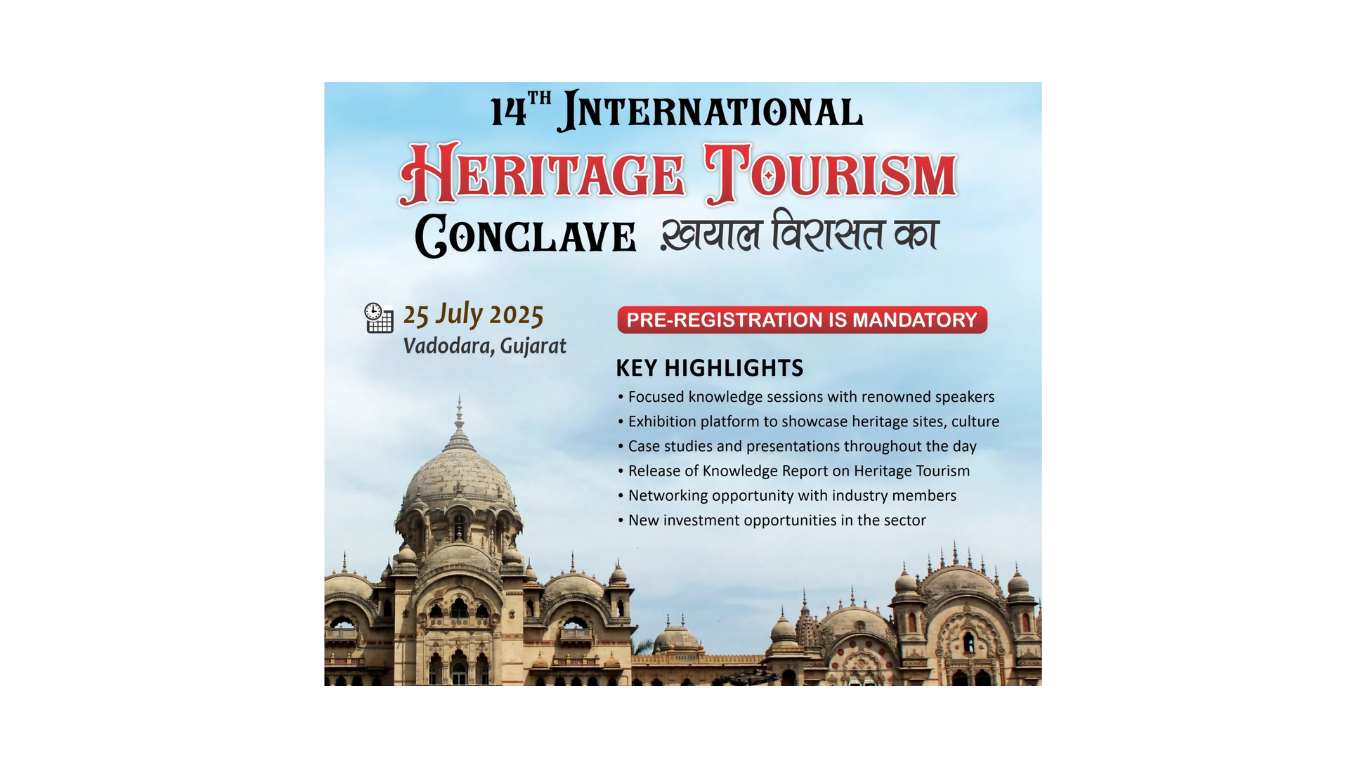India’s cultural legacy is vast, vibrant, and vulnerable. The latest KPMG in India- PHD Chamber of Commerce and Industry (PHDCCI) report titled – “Building Public-Private Synergies for Heritage Conservation” explores how strategic partnerships between public institutions and private stakeholders are reshaping heritage conservation—transforming static monuments into dynamic engines of tourism, community pride, and economic growth. It was launched at the 14th International Heritage Tourism Conclave.
Key Insights from the Report:
· Heritage as a Living Asset: Conservation now embraces adaptive reuse, immersive storytelling, and sustainable tourism.
· Strategic Public-Private Partnerships: Initiatives like “Heritage Adaptive Re-use” are unlocking private capital and expertise while preserving cultural integrity.
· Economic Potential: Heritage tourism contributes ~2.5% to India’s tourism GDP, with projections reaching USD 57.14 billion by 2033.
· Tech-Driven Conservation: AR/VR, digital archiving, and smart monitoring tools are enhancing site management and visitor engagement.
· Empowering Communities: Conservation efforts are reviving traditional crafts, generating employment, and fostering local pride.
Commenting on the report findings, Nilachal Mishra, Partner and Head of Government & Public Services (G&PS), KPMG in India said, “Heritage conservation is evolving into a collaborative mission where policy, purpose, and private innovation converge to transform our rich legacy into a force for the future. It is not just about preserving the past, but about shaping resilient communities, cultural pride, and inclusive growth”.
Vivek Agarwal, Partner and Head- Industrial & Infrastructure Development Advisory (IIDA), KPMG in India said, “Heritage conservation is no longer just about preserving the past—it’s about creating inclusive futures. By integrating tourism, technology, and community engagement, we’re redefining what it means to protect culture.”
Aalap Bansal, Partner – Industrial & Infrastructure Development Advisory (IIDA), and Co-Lead-Tourism, Sports and Leisure, KPMG in India said. “The success of PPPs in heritage conservation lies in their ability to blend authenticity with innovation. When private vision meets public purpose, heritage becomes a catalyst for sustainable development.”
India stands at a pivotal moment in its heritage journey. With the convergence of government ambition, private enterprise, and community participation, the country is poised to lead globally in heritage tourism. The report calls for a balanced approach to ensure resilient and inclusive growth:
· Collaboration and partnership: Strong alliances between government, private investors, heritage professionals, and communities.
· Sustainability and innovation: Environmentally sensitive, economically viable, and culturally respectful interventions.
· Institutional support: Clear policy frameworks, dedicated funding, and Urban Heritage Cells to mainstream PPPs.
· Capacity building: Training for conservation professionals, digital skill development, and community awareness.
· Risk management and evaluation: Insurance models and transparent monitoring systems to protect shared investments.
· Heritage conservation must be seen as both a moral obligation and a strategic investment—transforming monuments into vibrant symbols of identity and opportunity for future generations.



